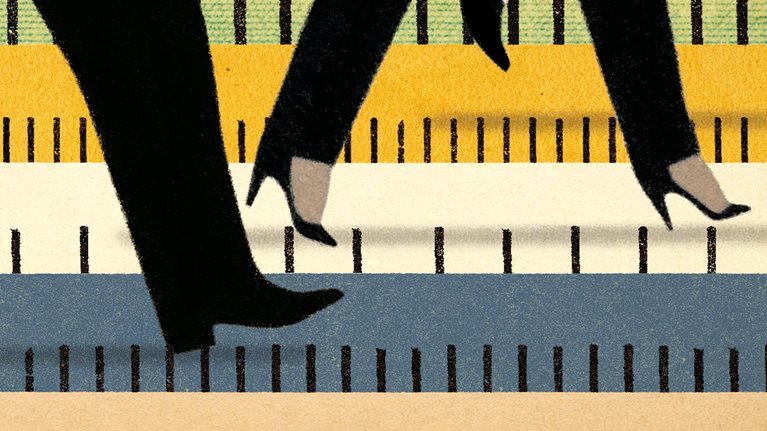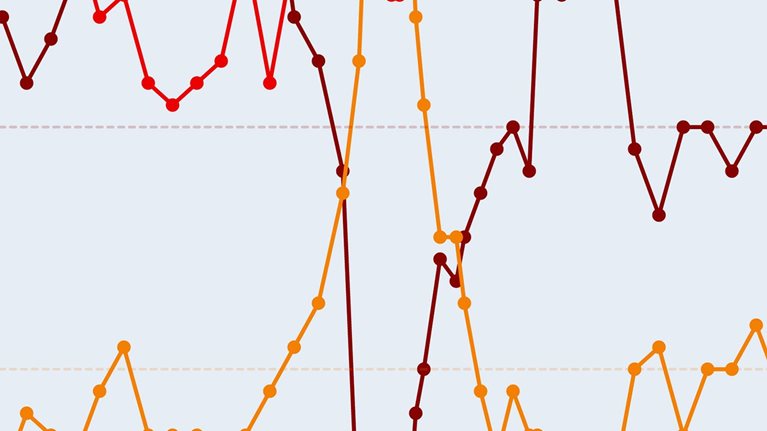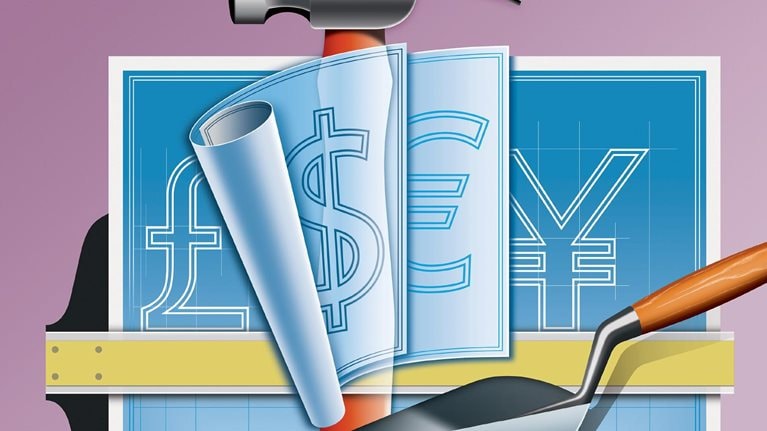First the good news: The way Americans feel about their own finances and the US economy is nowhere near as dismal as it was during the 2008–12 recession. The bad news is that, while things aren’t getting worse, they’re not getting much better either. Consumer morale, although stable, remains stubbornly low.
The slow start to the holiday shopping season underlines the findings of McKinsey’s latest Consumer Sentiment Survey. Every six to twelve months since August 2008, we have asked a representative sample of at least 1,000 Americans about their views on the economy and their own financial future, and how these opinions are shaping their buying decisions. The result is a unique data set that tracks how attitudes and behavior have changed over the past six years. In addition, we have completed nine surveys outside the United States, giving our data a global perspective.
There is no doubt that predicting the vitality and future growth of the American economy is a tricky science. Since the system is so heavily dependent on consumer spending, much depends on the level of confidence Americans have about their jobs, their cash flow, the value of discretionary spending, and the strength of the overall economy. We find, for instance, that because inflation-adjusted median household income has dropped over the past few years, consumers are feeling reluctant to increase spending and are instead remaining thrifty.
Here are the salient findings from this year’s survey:
Consumer morale remains challenged
Our report in September 2012 showed that things were looking up for most Americans. Many aspects of consumer sentiment indicated marked improvement. Yet from there, things have either plateaued or gotten worse. Consumers are still worried about losing their jobs (39 percent in 2014), and 40 percent of the consumers we surveyed said they are coping with the challenge of living paycheck to paycheck, up from 31 percent in 2012.
The significant economic pressure that families earning less than $75,000 a year feel has caused many of them to make spending adjustments in order to make ends meet. Roughly 40 percent of these households say they are making changes, including cutting back and delaying purchases, as compared with 22 percent of those in households earning at least $150,000 a year. Americans at all income levels have yet to return to their prerecession positive feelings about the country’s economy. Today just 23 percent say they are optimistic about the economy, down from 27 percent at the beginning of the recession in 2009.
Feelings of economic pressure have stabilized.

Consumers continue to look for ways to save money
While the number of consumers cutting back on spending has stabilized, Americans are still pinching pennies. Decreasing purchases of high-end brands and doing more one-stop shopping to reduce the number of trips are just as popular as they were last year, with 40 percent of consumers saying they have cut their spending over the past 12 months. An even bigger proportion of Americans (55 percent) say they continue to look for ways to save money, including paying more attention to prices, using coupons more often, shopping around to get the best deals, and buying more items in bulk.
Number of households that are cutting back has stabilized.

With food as the second-largest household expense after housing, many Americans say they are cutting back on the most costly eating options: dining at restaurants and ordering takeout. Forty-seven percent say they have eaten out less often over the past 12 months, on par with those who said this in 2013. Money-saving, in-home dining options, such as eating leftovers, cooking from scratch, and packing lunches from home, remain popular, as consumers discover they like these thrifty dining habits more than they expected. However, this kind of behavior declined this year since consumers have been dining in more since the beginning of the recession and are now hitting a point of saturation.
Value brands are here to stay
Throughout the recession consumers saved money on grocery and household products by trading down to less expensive brands, often private-label or store brands. That trend continues today, though trade-down rates in most food, beverage, and household-product categories have stabilized at a lower rate than they were at four years ago. Still, consumers are not returning to higher-priced options. Nearly three-quarters say they do not intend to go back to purchasing more expensive brands. For one-third of Americans, this is because they no longer prefer the more expensive brand, having realized that the cheaper product offers better value for the money than expected and is of higher-than-expected quality. Another 39 percent of Americans say they would like to buy the more expensive brand, but that doing so isn’t worth it.
The product categories in which consumers are most likely to trade down include cosmetics, over-the-counter medicines, household cleaning products, frozen vegetables, and cereal. On average, 55 percent of those who trade down say they have switched to private labels, with several exceptions. In the beer and cosmetics categories, just 18 percent and 26 percent of consumers, respectively, trade down to private label. The remaining consumers are trading down to less expensive branded products.
Inspired by the value of better-quality ingredients, consumers are bucking the frugality trend in some categories. In wine, beer, and skin care, some consumers are actually trading up.
Channel shifting continues
If you find yourself spending more time shopping for everyday essentials at some combination of club stores, mass merchants, dollar stores, and online, you are not alone. Forty-eight percent of American consumers say they have spent more of their household budget online in the past 12 months; 34 percent have done more shopping at dollar stores, and 32 percent, more at club stores. Momentum here continues, since most consumers—73 and 63 percent, respectively—report more positive experiences than they expected in online and club stores. Regarding the small but growing category of online grocery, consumers say that saving time is the most important reason for shifting to this channel. Ranking much lower in importance are lower prices, the freedom to order at any time, and greater product selection.
On the flip side, the channels that continue to lose household spending are traditional grocery stores and drug stores. Spending at convenience stores is stable, according to our survey. The less affluent are moving away from drug stores at a greater rate than average, and more affluent households are shifting a greater share of their spending toward online.
Consumers expect to spend more money in dollar and mass channels in the next year.

No intention to return to old spending levels
Multiple years of austerity have left consumers with altered views about spending. Almost 40 percent say they will probably never go back to their prerecession approach to buying. Twenty-nine percent say they now have new attitudes and values about spending, a figure that’s up from 17 percent in 2010. An additional 24 percent claim that their opposition to increased spending is the result of a change in their economic situation.
Those who do want to return to previous spending levels say they are waiting until they pay down enough debt or rebuild their savings (32 percent). One-quarter are waiting until they 4 are back at their old income levels.
Our findings about where consumers plan to shop in the next year track evenly with consumer behavior over the past year. Dollar and mass channels are expected to fare well in the future, while high-end brands will continue to suffer. Eighteen percent of Americans say they intend to increase the amount they spend at dollar stores and 17 percent say they will spend more at mass merchants.
Sentiment and behavior vary by demographic
In addition to our broad analysis of the American population, we focused on four key groups whose spending behavior and attitudes differ in important ways from the general population’s.
1) Hispanic households (there will be an additional 7 million by the year 2020, while all other ethnicities combined will add only 5 million) are more frugal than the general population because of greater insecurity about personal finances. Just over half of Hispanics are worried about losing their jobs, versus 39 percent of all Americans. Hispanics are also twice as likely to have participated in the food-stamp program, or SNAP, in the past 12 months. (Somewhat paradoxically, Hispanics are more optimistic than the average about the economy.)
As a result, Hispanic Americans are making more spending adjustments, such as eating at home, using more coupons, and shopping around more often to get the best deals. Fifty- four percent say they are eating at home more, versus 44 percent of the general population. Hispanics are focused on healthy food but have reduced their purchases of organic and natural foods to a greater extent than the general population. They are 35 percent more likely to trade down to less expensive brands, and although they understand the value of private labels, they nonetheless have negative impressions of them. Overall, Hispanics have cut back on spending 20 percent more than the general population.
2) Millennials are a critical group to understand, since collectively they will spend three times more in most household categories in 2020 than they do currently. In comparison with the general population, 24–34 year olds are more affected by paycheck cycles and are more involved in money-saving behavior, such as buying both in bulk and in smaller- pack sizes to spend less. They also pay more attention to prices, use more coupons, and shop around more to get the best deals. Overall, they are 15 percent more likely than the general population to cut back on spending. Many of them expect to return to their old spending levels soon but want to pay off debt and build savings first.
Although millennials are 30 percent more likely to trade down to cheaper brands, they are twice as likely to throw penny-pinching to the wind and splurge in certain categories, such as beer and wine, hair and skin care, frozen pizza, fresh produce, and ice cream. They are also more focused on healthy eating and are shifting more of their spending to organic/natural food than the total population. Millennials are active channel shifters and have moved twice the amount of spending to club stores and one-third more spending to the online channel.
3) Baby boomers (age 55–74), unlike millennials and Hispanics, have been slow to adjust their behavior. Even though they are just as concerned about the economy and their financial well-being as the general population, boomers do somewhat less penny-pinching. Thirty-six percent say they have cut back on spending, versus 40 percent of Americans overall. Nor have they changed their eating or trading-down behavior very much. Although boomers understand the value of store brands and have slightly better-than-average impressions of them, they are 30 percent less likely to switch to cheaper brands.
These older Americans also do less channel shifting. Only 15 percent report spending more money online in the past 12 months, versus 33 percent of the general population. However, they are twice as likely to move away from drug stores, a notable finding, given that boomers buy more medicines and prescriptions than younger Americans.
4) Low-income consumers, not surprisingly, are struggling fi ancially and making every effort to save money. By 2020 their spending power will decline by 5 percent relative to today. These consumers are 50 percent more likely than the average to live paycheck to paycheck, and 30 percent say they are having a really hard time making ends meet, compared with 17 percent of the general population. Forty-three percent have participated in the SNAP program in the past 12 months.
Low-income consumers are actively changing their habits to save money, such as paying more attention to prices and waiting for household goods to go on sale. They are also doing less eating out and ordering in. Their penny-pinching sometimes comes at the expense of eating healthy foods. Fifteen percent say they have been eating less healthy food over the past 12 months, versus 10 percent of the general population. Low-income consumers trade down 50 percent more than the general population, especially in cosmetics, canned vegetables, household cleaning products, and over-the-counter medicines, and plan to keep buying the cheaper brands. Forty-three percent say they will continue buying store brands even if their economic situation improves, versus 38 percent of the general population.
Cautious spending behavior is the new normal and is unlikely to change in the near future. American consumers continue to cut back on spending by delaying purchases, trading down to lower-priced brands, and eating more meals at home. Results vary somewhat by different demographic segments. To win market share and create successful new products, consumer-packaged-goods companies need to look at consumers by cohort and understand where there are exceptions to rules about cautious spending. Beer players, for example, could benefit from stressing the quality of ingredients in their premium brands to leverage the millennials’ desire to trade up in beer. Drug retailers could take note of the loss of spending among boomers and create approaches targeted at winning them back.


